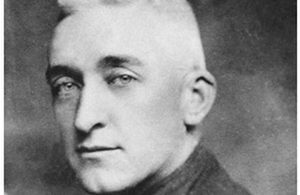WW1 Canadian VC recipient Bellenden Seymour Hutcheson
The story of Canadian First World War Victoria Cross recipient Bellenden Seymour Hutcheson.

Credit: National Defence Canada
70 men from Canada received the Victoria Cross, Britain’s highest award for gallantry, during the First World War. As part of the Centenary Commemorations the people of the United Kingdom marked their gratitude to those courageous men by presenting a bronze memorial plaque to their home country engraved with their names. The plaque is now displayed at the British High Commission Ottawa. This archive tells their stories.
Name: Bellenden Seymour Hutcheson
DOB: 16 December 1883
Place of Birth: Mount Carmel, USA
Date of Action: 2 September 1918
Place of Action: Drocourt-Quéant Line, France
Rank: Captain
Regiment: Canadian Army Medical Corps
Bellenden Seymour Hutcheson was born in Mount Carmel in the United States on 16 December 1883. He graduated from medical school and spent several years practising as a doctor in the American West. After the outbreak of World War One, Hutcheson joined the Canadian Expeditionary Force as a medical officer. In August 1918 he was awarded the Military Cross for attending to, and dressing the wounded.
Captain Hutcheson was awarded his Victoria Cross for his bravery and devotion to duty on 2 September 1918 on the Drocourt-Quéant Line near Cagnicourt, France. His citation explains further:
Without hesitation and with utter disregard of personal safety he remained on the field until every wounded man had been attended to. He dressed the wounds of a seriously wounded officer under terrific machine-gun and shell fire, and, with the assistance of prisoners and of his own men, succeeded in evacuating him to safety, despite the fact that the bearer party suffered heavy casualties. Immediately afterwards he rushed forward, in full view of the enemy, under heavy machine-gun and rifle fire, to tend a wounded serjeant, and, having placed him in a shell-hole, dressed his wounds. Captain Hutcheson performed many similar gallant acts, and, by his coolness and devotion to duty, many lives were saved.
After the war he continued working as a Doctor in the USA. He died in 1954, and is buried in Mount Carmel Cemetery.